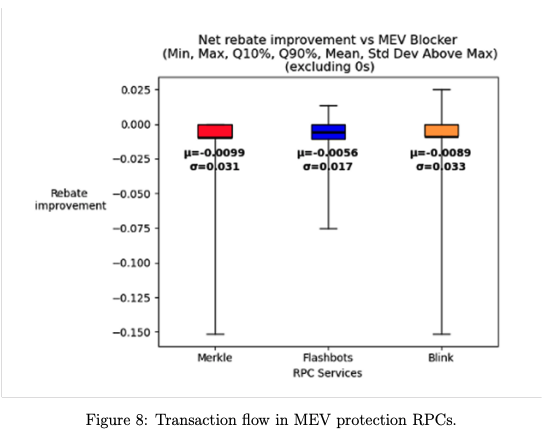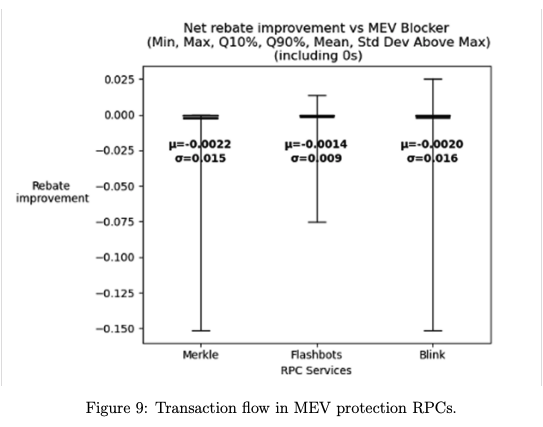Backrun Quality
First, we measure the backruns generated by the RPCs:

We follow a similar methodology as for swap price improvements: we compare between each RPC solution and MEV Blocker, and only consider swaps that landed on-chain both via MEV blocker and via at least another RPC.
We plot a similar box plot as previously. The first plot represents the average backrun, and its distribution for all the transactions. The second plot only includes transactions where one of them (MEV Blocker or the RPC) has a non-0 backrun.
The swaps can be classified in 2 categories: very liquid pairs (ETH-USDC) and less liquid pairs (ETH-GNO, ETH-COW, and ETH-AAVE). The liquid pairs did not generate any backruns, which leads to many 0 values. Indeed, for these pairs there is enough liquidity so that one trade of reasonable size does not unbalance the pool enough to create an arbitrage opportunity. Additionally, even the less liquid pairs don’t generate backruns every time. Therefore, we plot the values with and without the transactions with no backrun. For this analysis, we find that MEV Blocker’s backruns are larger than any other RPCs solutions with more than 10% confidence.
However, if we look at the backruns received by the users, the values are different as Blink and Merkle don’t send these backruns back to the user:

The comparison between MEV Blocker and Flashbots remains unchanged, because both RPCs send 100% of the rebates to their users. However, we can conclude that MEV Blocker and Flashbots are better for the users than Merkl and Blink, in terms of rebates value.


